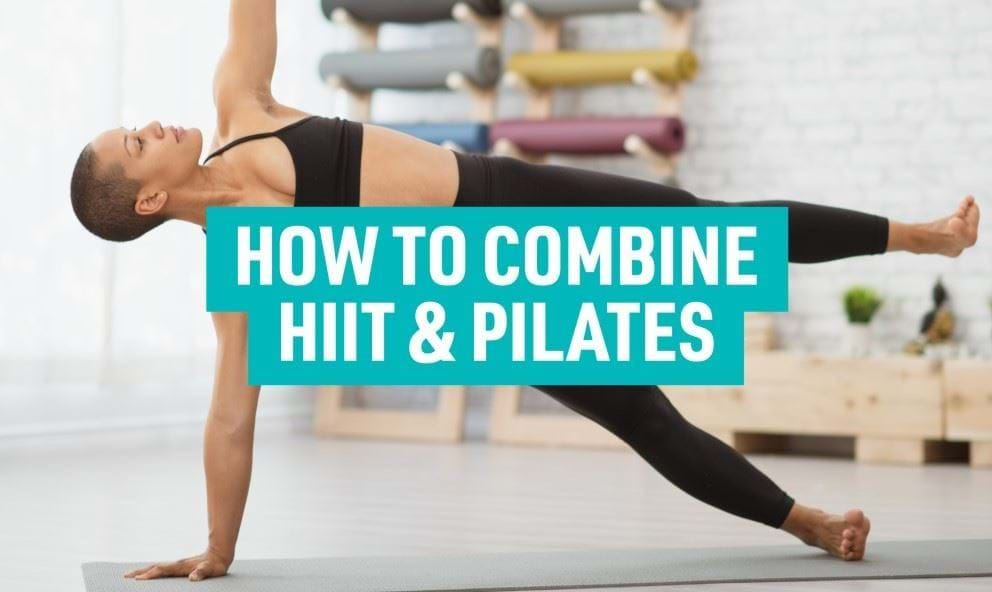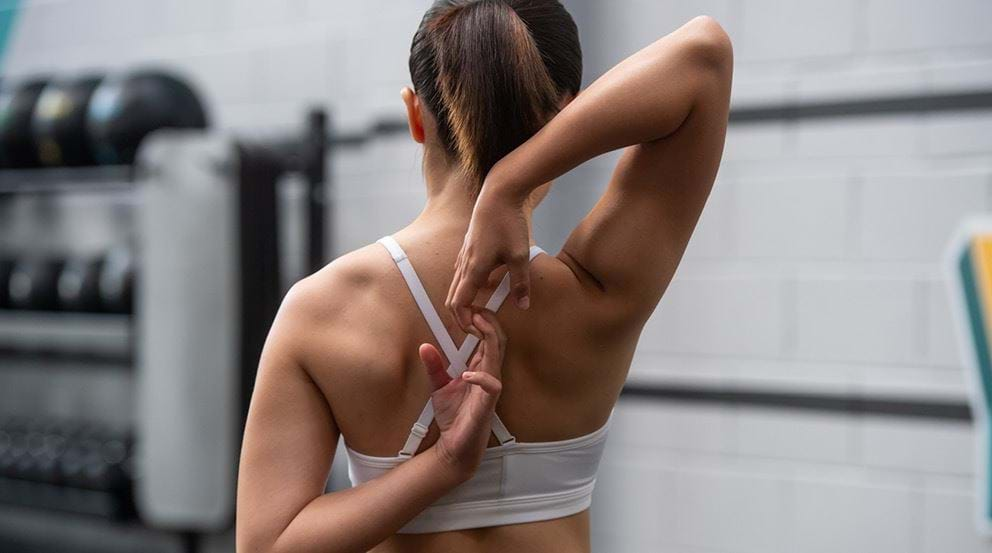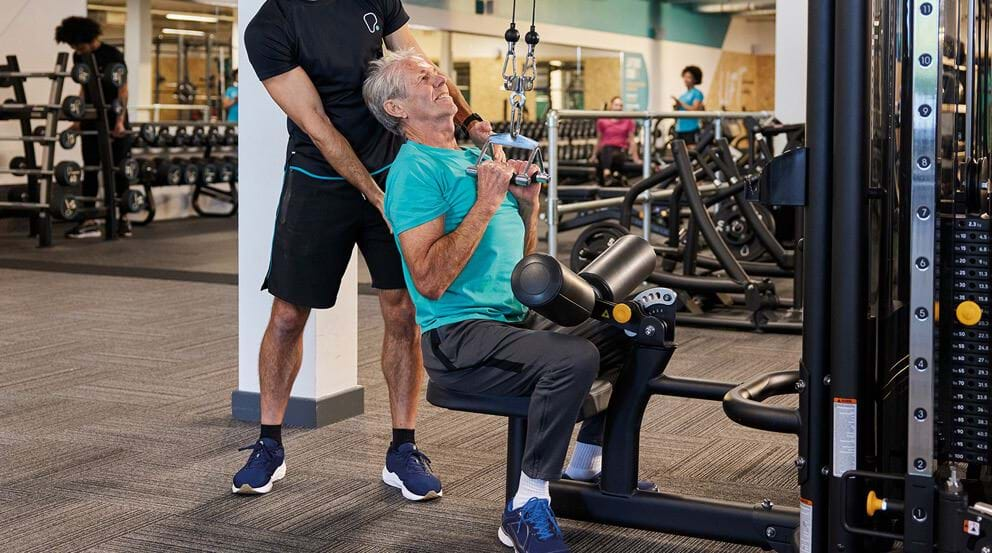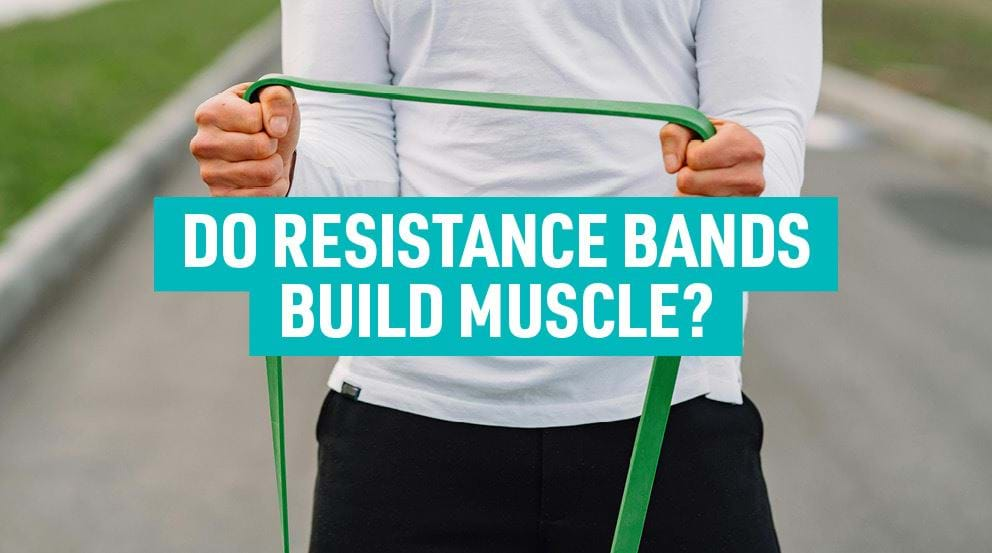6 Of The Best Exercises To Combine HIIT & Pilates

What Is Pilates HIIT? | Benefits | Who Is It Good For | How Often | Exercises
HIIT and Pilates are two popular styles of workouts, with very different goals and benefits. Some people choose to combine the two to create a HIIT Pilates fusion.
Not sure if HIIT Pilates is right for you? PureGym based Pilates Instructor Amy Humphries looks at the benefits of combining Pilates & HIIT and some of the best exercises to start with.
What Is A Pilates HIIT Workout?
HIIT Pilates workouts combine the strength and flexibility-based exercises from Pilates with the low and high intensity interval format of HIIT.
Pilates workouts are centred around bodyweight exercises that improve muscular imbalances and build strength, flexibility, and stability. The exercises draws inspiration from yoga, calisthenics, and even ballet, and people who do Pilates regularly see and improvement in mobility, flexibility, and a stronger core. You can read more about Pilates and its benefits here.
On the other hand, HIIT is a type of training that combines bursts of high intensity exercise periods with periods of low intensity exercise or complete rest, with workouts coming in under 20-30 minutes. Some of the benefits of HIIT include increased calorie and fat burn, and improved cardiovascular endurance and heart health.
What Are The Benefits Of Combining HIIT And Pilates?
Pilates and HIIT workouts are both great forms of training, but they each have gaps when it comes to improving overall fitness. Combining the two allows you to create a well-rounded workout that improves every aspect of fitness, including:
Full body strength
Mobility and flexibility
Stability, balance, and core strength
Cardiovascular health
Calorie expenditure
HIIT Pilates workouts are also really efficient, allowing you to get all the above benefits in as little as 20 minutes a day. They also don’t require much space or any equipment, so are ideal for workouts on the go or when you don’t have time to head to a gym.
Who Is HIIT Pilates Workouts Good For?
HIIT Pilates is great for almost anyone thanks to its flexible format and wide range of benefits. Whether trying to lose weight, sculpt and tone your abs and glutes, or simply looking for fun full body workouts you can squeeze in on your lunchbreak, HIIT Pilates will work for you!
How Often Should You Do Combined HIIT And Pilates Workouts?
Pilates workouts can be done daily, but true HIIT workouts should be limited to 3-4 times a week as they create a lot of stress on the body and central nervous system and need time to recover between workouts. It's also good to include some longer strength-based workouts over the week, whether that's a longer Pilates session or weight training.
An example of a balanced week could be:
Monday: 20 minutes HIIT Pilates + 20 minutes yoga
Tuesday: 1 hour full body strength training
Wednesday: 25 minutes HIIT Pilates
Thursday: Rest
Friday: 1 hour Pilates
Saturday: 1 hour full body strength training or Pilates
Sunday: 1 hour yoga
How To Build A Pilates HIIT Workout (And 6 Exercises To Include)
There are multiple ways your HIIT Pilates workout can look, thanks to the wide range of Pilates exercises and flexible format of HIIT training. You can try different exercises, tempos, and timings to see what feels best for you.
Below are some Pilates exercises and HIIT formats you can try to get started.
6 Pilates Exercises For HIIT Workouts
Glute bridges
Glute bridges work the glutes, as well as the hamstrings, quads, and core.
Lie on your back with feet flat on the floor in front of your glutes and knees bent facing the ceiling. Tuck your pelvis under and role your spine up off the floor until your body is in a straight line from shoulders to knees, then return back to the mat. You can make this more difficult by doing single leg variations.
Ab prep
Pilates ab preps strengthen the core, particularly the abdominals.
Lie down on your back with your arms extended out by your sides. You can keep your feet on the floor with your knees bent, or make this more challenging by raising the feet with bent knees, or with straight legs. Use your abs to flex the spine and lift the head, shoulder blades, and arms up off the mat, before slowly returning back to neutral.
Scissors
Scissors is a Pilates exercise that strengthens the core while stretching the hamstrings and hip flexors.
Lie on your back with your arms extended out by your sides. Lift your head, shoulders, and arms off the floor and tuck your chin so you are looking at your belly button. Lift both legs so they hover off the floor. Keeping your torso still, raise one leg towards the ceiling until you feel a light stretch in your hamstrings. Alternate the leg position so that each leg switches in mid air.
Clam
Clam, sometimes known as clamshells, strengthens the abductor muscles including the glutes.
Lie on your side with both hips stacked on top of each other and your feet, hips, and head all in one line, knees bent at a 90 degree angle. Lift both feet off the floor, then externally rotate the top leg to bring the top knee away from the bottom knee. Return the knee back down while keeping the feet off the floor.
Side lying kicks
Side lying kicks work the glutes and help to improve balance and stability.
Lie on your side with both hips stacked, and your body in a straight line from feet to head. Point the toes and kick the top leg forward as far as you can while keeping your torso and bottom leg still, then return. Repeat for your number of reps, then flex the foot and kick the leg backwards for as far as you can while keeping the torso stable, before returning. Repeat for reps, then kick the leg as far forward and back as possible for reps.
Pilates mountain climbers
Pilates mountain climbers are similar to mountain climbers but slowed down, and with the knee held as close to the chest as possible for a breath, to work the core and hip flexors.
Start in a high plank position and draw the knee as close to the chest as possible. Hold here for a breath before returning to the floor. Alternate each leg for your desired reps or time.
3 HIIT Workouts Formats To Try
To count as HIIT, a workout needs to be short (around 10-20 minutes is ideal) and alternate between short periods of high intensity exercise with short periods of rest. There are plenty of ways to do this, including these three examples:
Rep based circuit
Choose 5-6 exercises and perform 12 reps of each consecutively with no rest -- this is one circuit. Rest for 30-60 seconds then repeat, for a total of 5-6 circuits.
Tabata
Choose 4 exercises. For round 1, perform 20 seconds of one exercise followed by 10 seconds of rest, for a total of 8 times. Repeat this for each exercise for a total of 4 rounds.
30 seconds on, 30 seconds off
Choose 4-6 exercises. Perform 30 seconds of one exercise, followed by 30 seconds of rest. Repeat this for each exercise -- this is one circuit. Do each circuit 5 times.
Make sure you spend a few minutes warming up before your workout, and a few minutes stretching off after to cool down. This will help to prevent injury, improve recovery, and increase flexibility. You can find warm up ideas here, and cool down ideas here.
If you are new to Pilates, it can be helpful to try some classes to learn how to do multiple Pilates exercises properly. We offer Pilates in multiple gyms -- find your nearest gym here.


